We could be wrong, but our sense is that most of us who live in Maine—even those of us who love winter sports and activities—look forward to the return of spring. Maybe it’s in our blood, maybe it’s just the air we breathe as the world warms around us, but spring seems to rejuvenate that feeling of connection to the earth and the rhythms of nature. If you’re like us, we can feel the physical response to more daylight and the (intermittently) warmer temperatures. As birders, as March marches onward, we look for those signs of spring—especially in the birds.
This year, we’ve noticed four dominant signs of spring in the bird world. Maybe you are noticing them, too?
More Singing
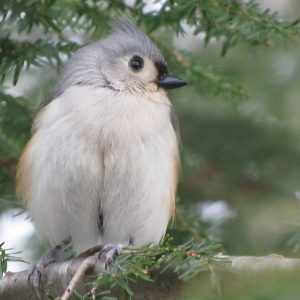
An increase in singing by Maine’s resident birds is one of the most obvious bird signs of spring. Tufted Titmice, with their sweet “PEET-er PEET-er PEEt-er” are among the most prevalent. (Photo: Jayne Winters)
Perhaps as early as January, we started to notice certain of our resident birds warming up their singing voices, tuning up more regularly and with more energy. By February, we were hearing what sounded like multiple song duels across the neighborhood from Tufted Titmice, Northern Cardinals, and Black-capped Chickadees. The resident Carolina Wrens began singing more often and louder as February gave way to March. Around our yard, the scattered Song Sparrows that spent the winter are now really belting out their tunes.
More Fighting

Northern Cardinals are beautiful, but they’re hardly demure. Around the authors’ yard. At least four males have been diving and swooping at each other, an attempt to establish the breeding territory as their own. (Photo: David Silva)
Among the first species that began skirmishing? It may surprise you to learn that it was the majestic Bald Eagle! On cold, clear days in February, there were multiple times where we heard the high stuttering “tee-tee-tee-tee-tee” calls of our local eagles and looked up to see the massive birds high in the air, chasing each other across the blue tapestry of the sky. Sure, majestic, but fierce! A few weeks later, it was the American Crows we noticed, chasing each other and diving through backyards and parks—necessary protocol in setting up their breeding territories. Now, it’s the singing Northern Cardinals that are wildly slicing through the air, holding nothing back as they chase each other off feeders, out of shrubbery, and around the treetops, too. More and more of our resident birds are getting serious about establishing the territories in which they intend to nest, all in an attempt to exclude others of their species.
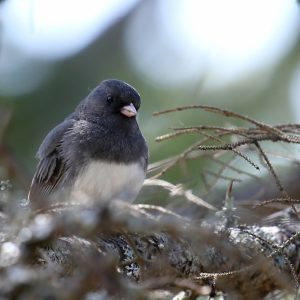
Some birders have noted that the Dark-eyed Juncos who spent the winter at their feeding station are long gone, although a few hold outs continue to linger at the Wells’ yard. (Photo: David Small)
Departures
As spring advances, some of the birds of winter retreat. Although we’ve still got Dark-eyed Juncos enjoying our bird feeders, we heard from a few people they the juncos they hosted in winter at their backyard feeders are long gone. (Not only are our visiting juncos still here, some are starting to sing even though they don’t breed in our neighborhood). American Tree Sparrows are now beginning to drift back north to their northern Canada and Alaska breeding grounds. If you live on the coast, you’ll start to see fewer of the various sea ducks, grebes, and loons that breed in Arctic and Boreal regions but for which visit Maine is their wintering grounds.
Arrivals
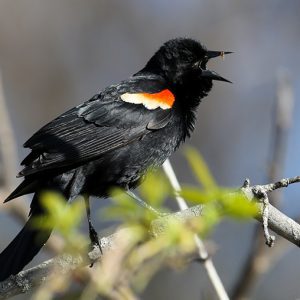
While birds like the Eastern Phoebe and American Woodcock are sure signs of spring in Maine, the Red-winged Blackbird may well be the most conspicuous of new arrivals. (Photo: David Small)
Now the big one: arrivals! The arrival of birds that don’t spend the winter (or do so only rarely or in small numbers) is the ultimate sign of spring for most people. The classic spring arrival bird is the Red-winged Blackbird. When they first show up in your backyard or at your favorite little marsh near the lake after being absent since last fall, it really feels like something big has happened. For us, hearing that first “Ok-er-lee” song is heartwarming, like hearing from an old friend. When the red-wings and grackles appear here in Maine, it’s pretty safe to say that spring is really and truly on its way. There are other favorite “first birds “of spring for many people—the first Eastern Phoebe (ours was March 13) wagging its tail from the clothesline or the porch rail, the first Tree Swallow fluttering near the nestbox, the first American Woodcock (also March 13 for us) giving its buzzy “peent” call in a brushy field. As the season progresses, the list of first arrivals gets longer and more diverse as the flood of migrants makes its way north from Central and South America and the Caribbean.
We hope you are getting some joy watching for the signs of spring from the birds that connect us to the rhythms of our natural world.
— Jeff and Allison Wells



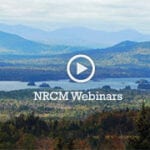
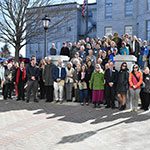






Leave a Reply